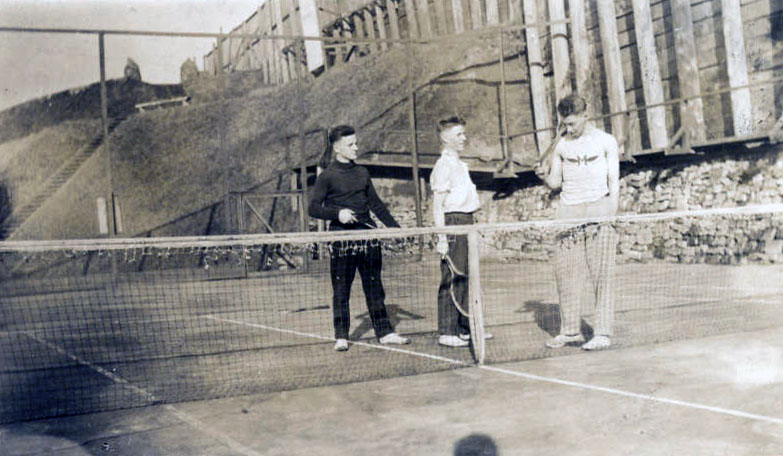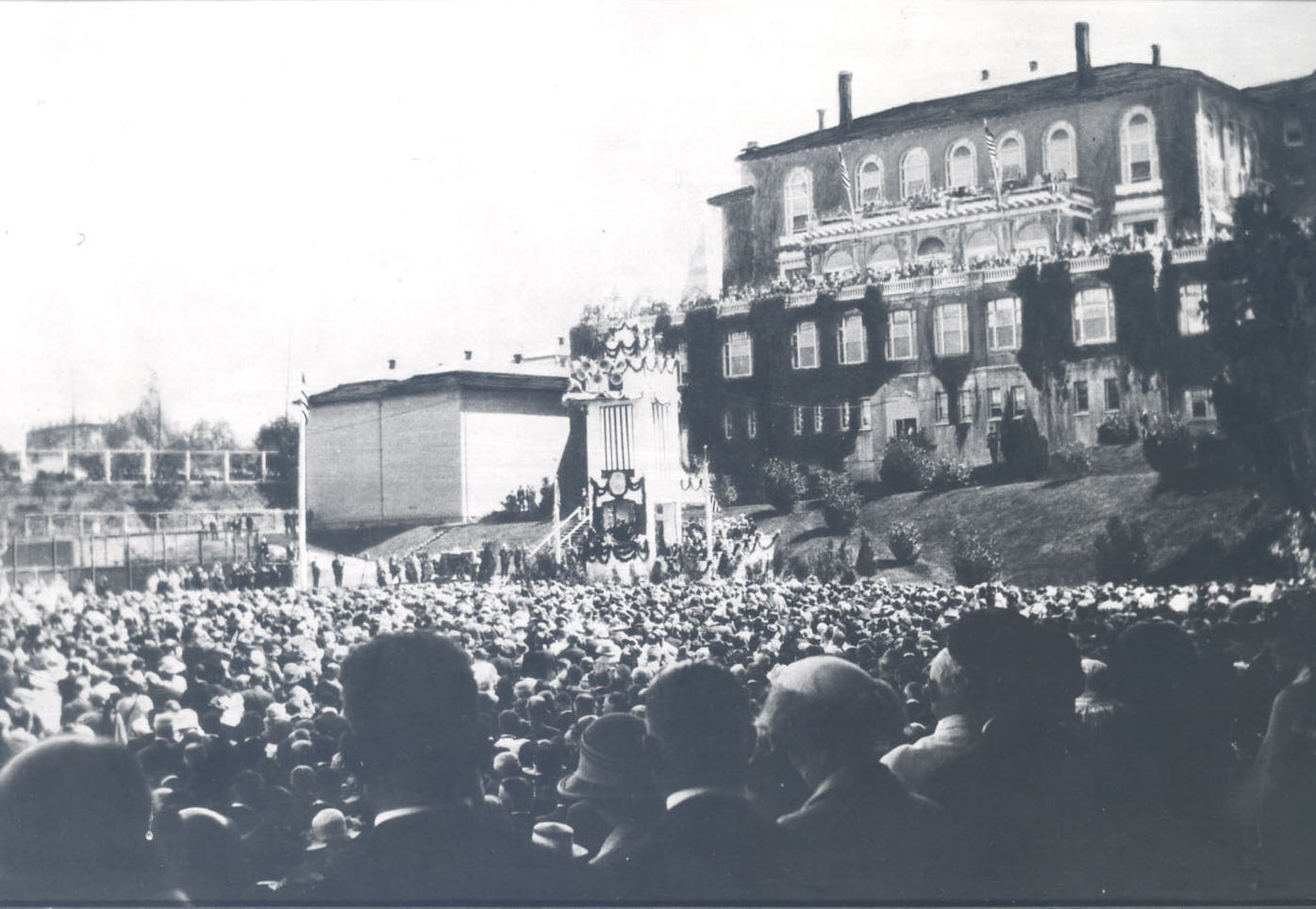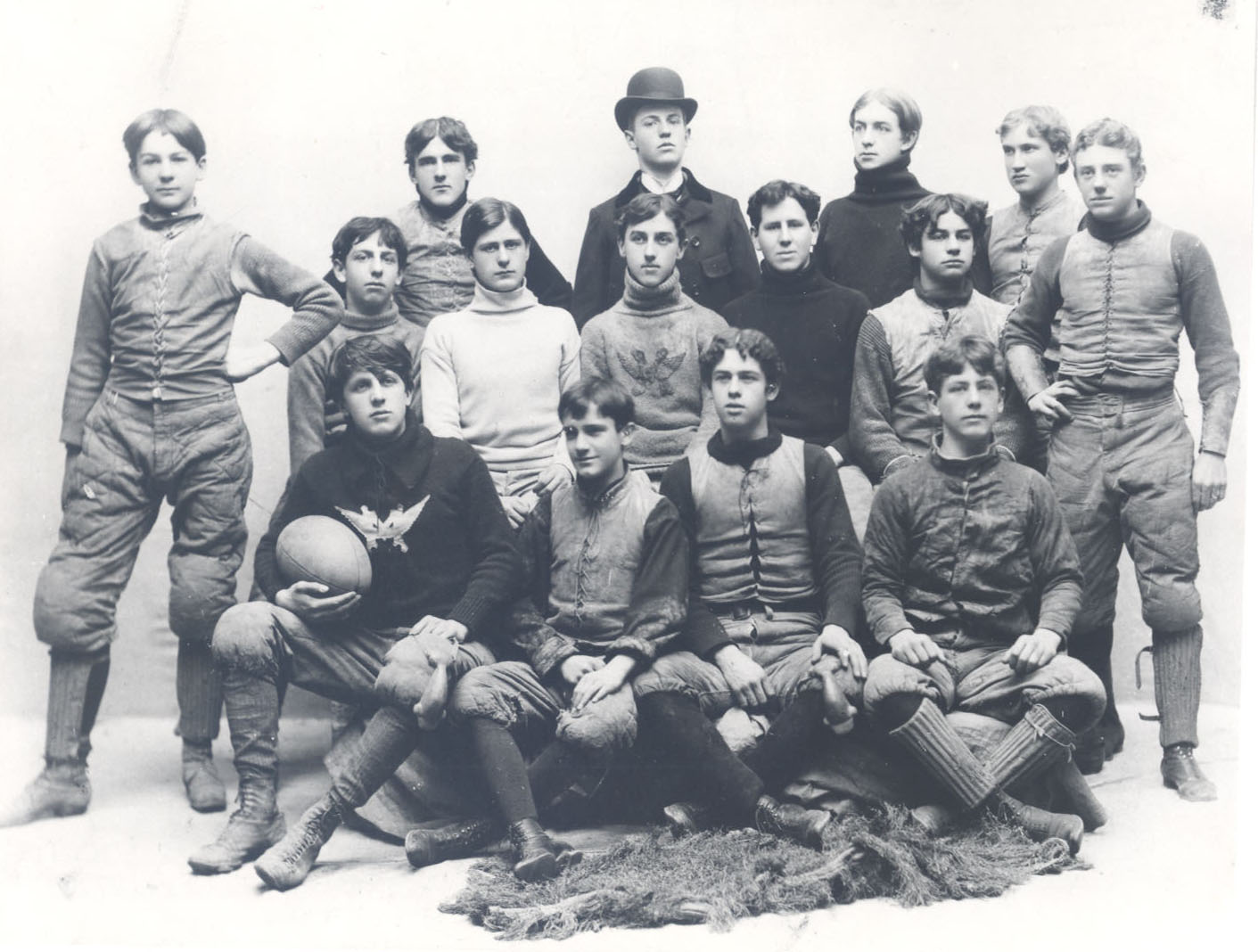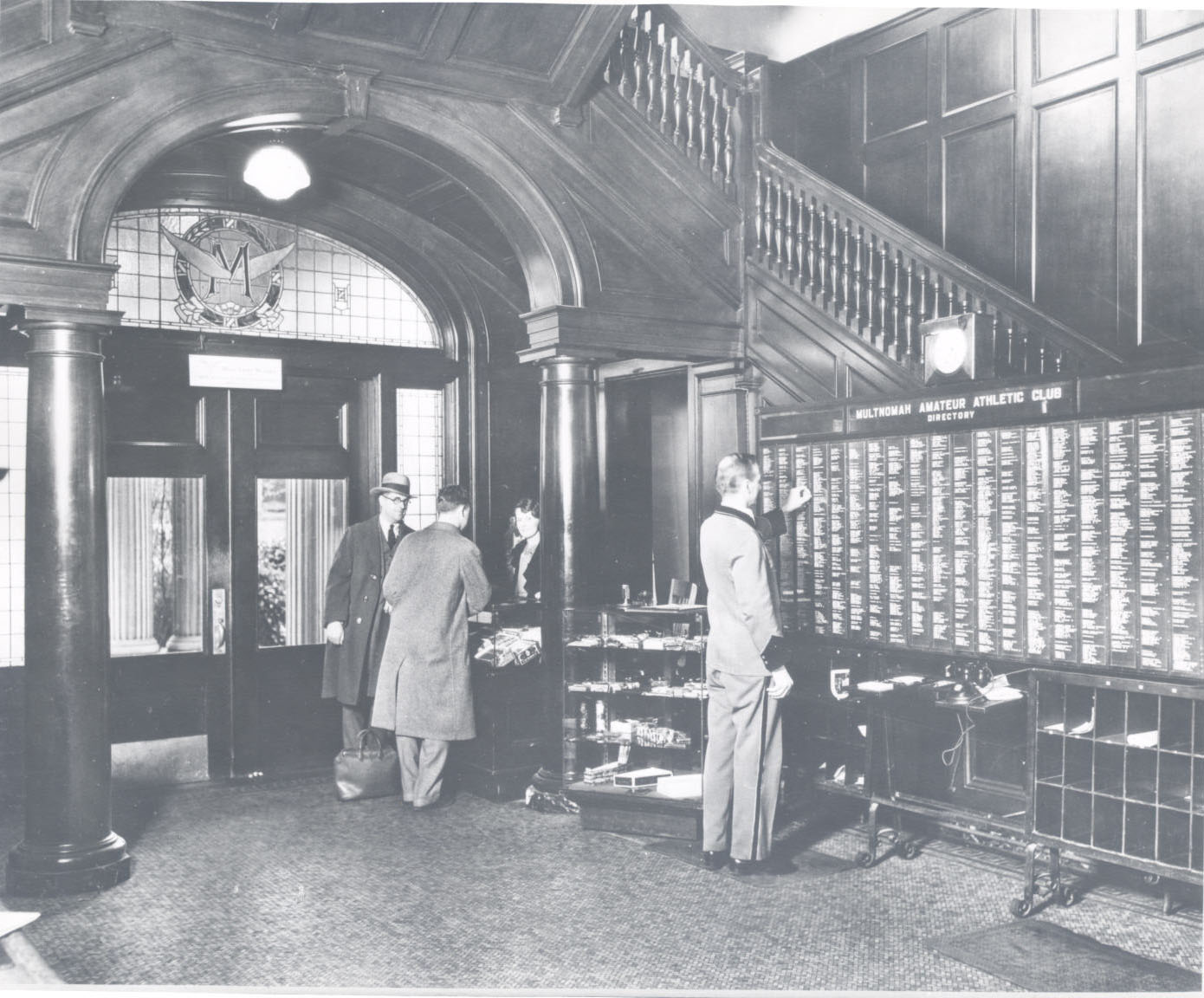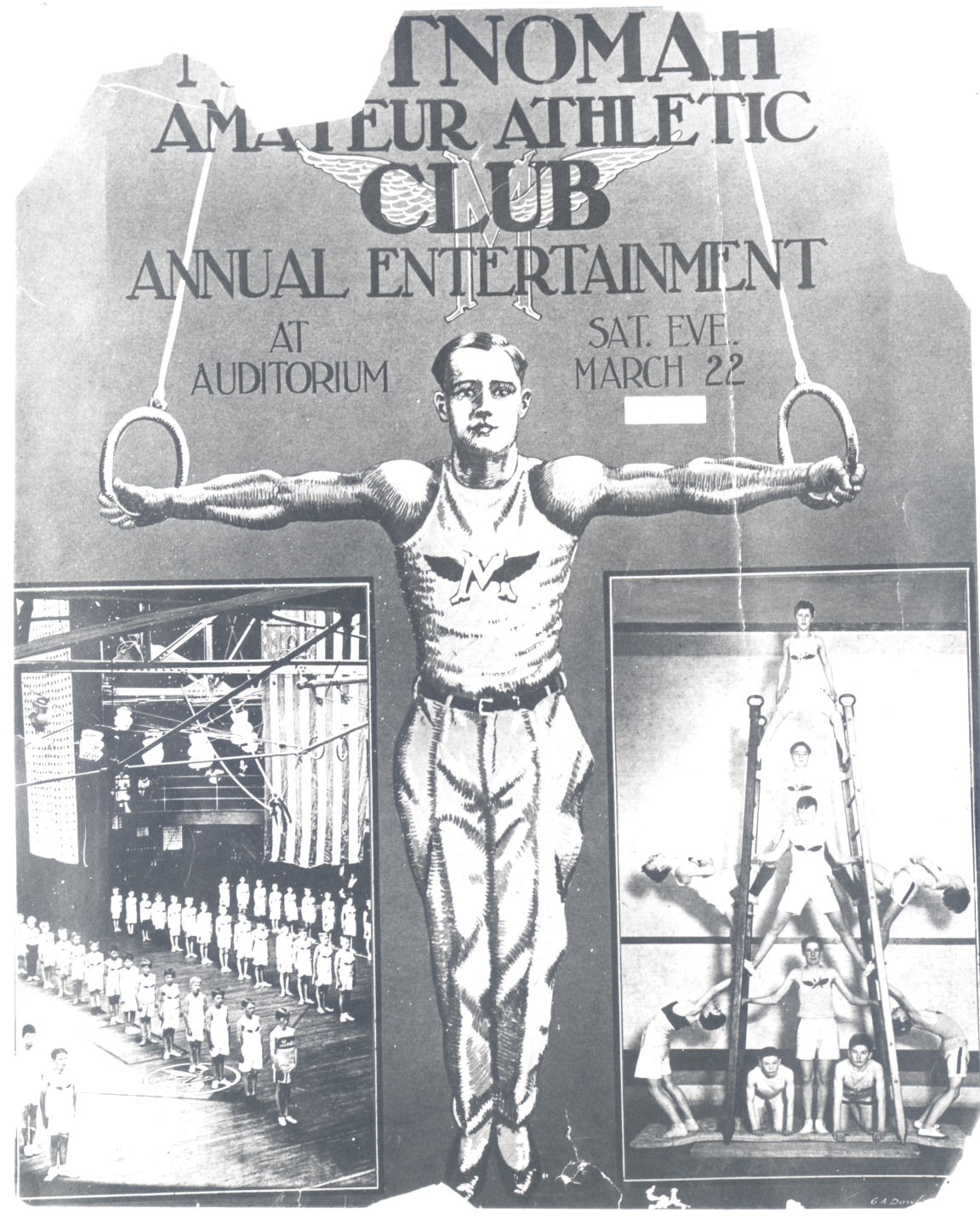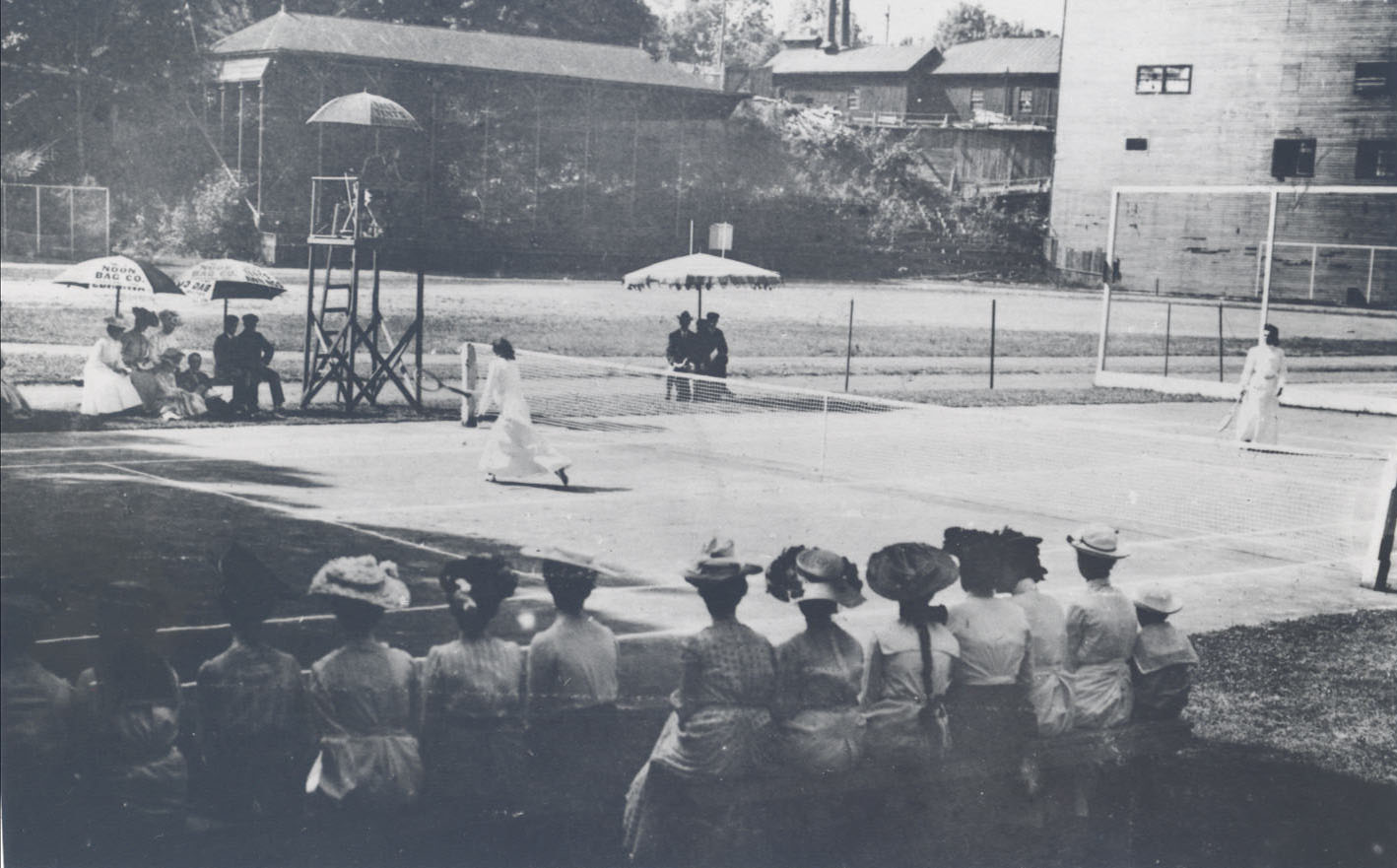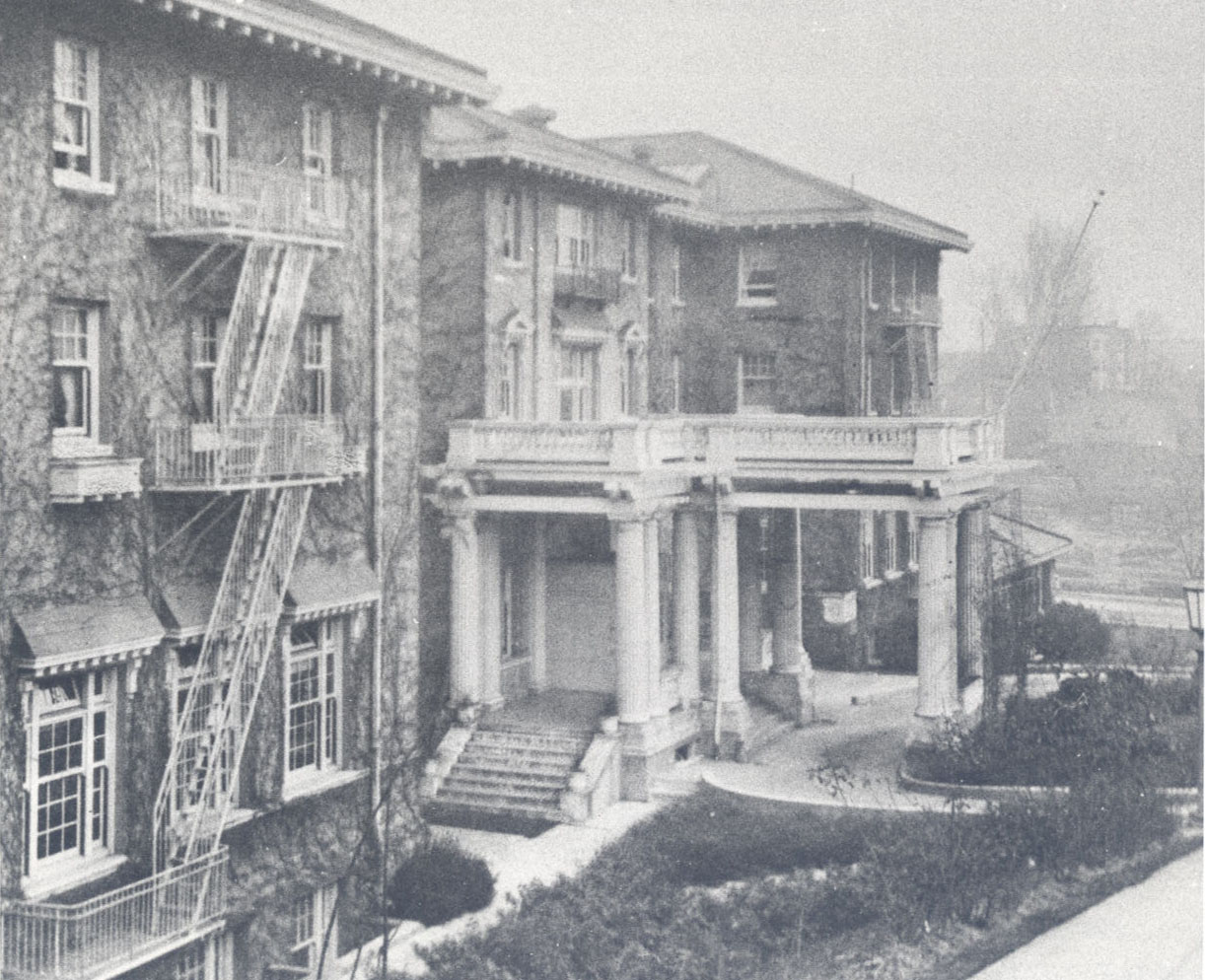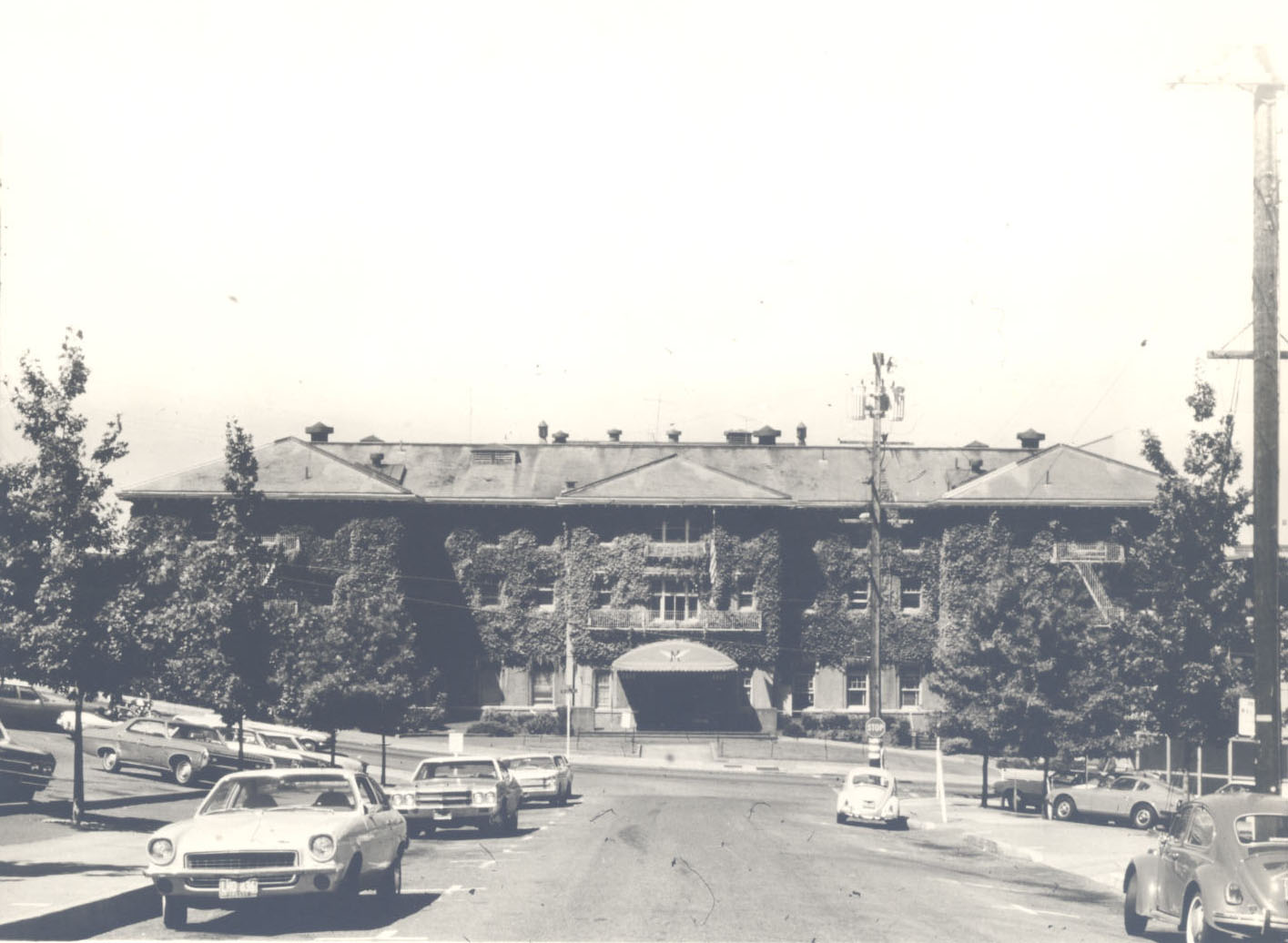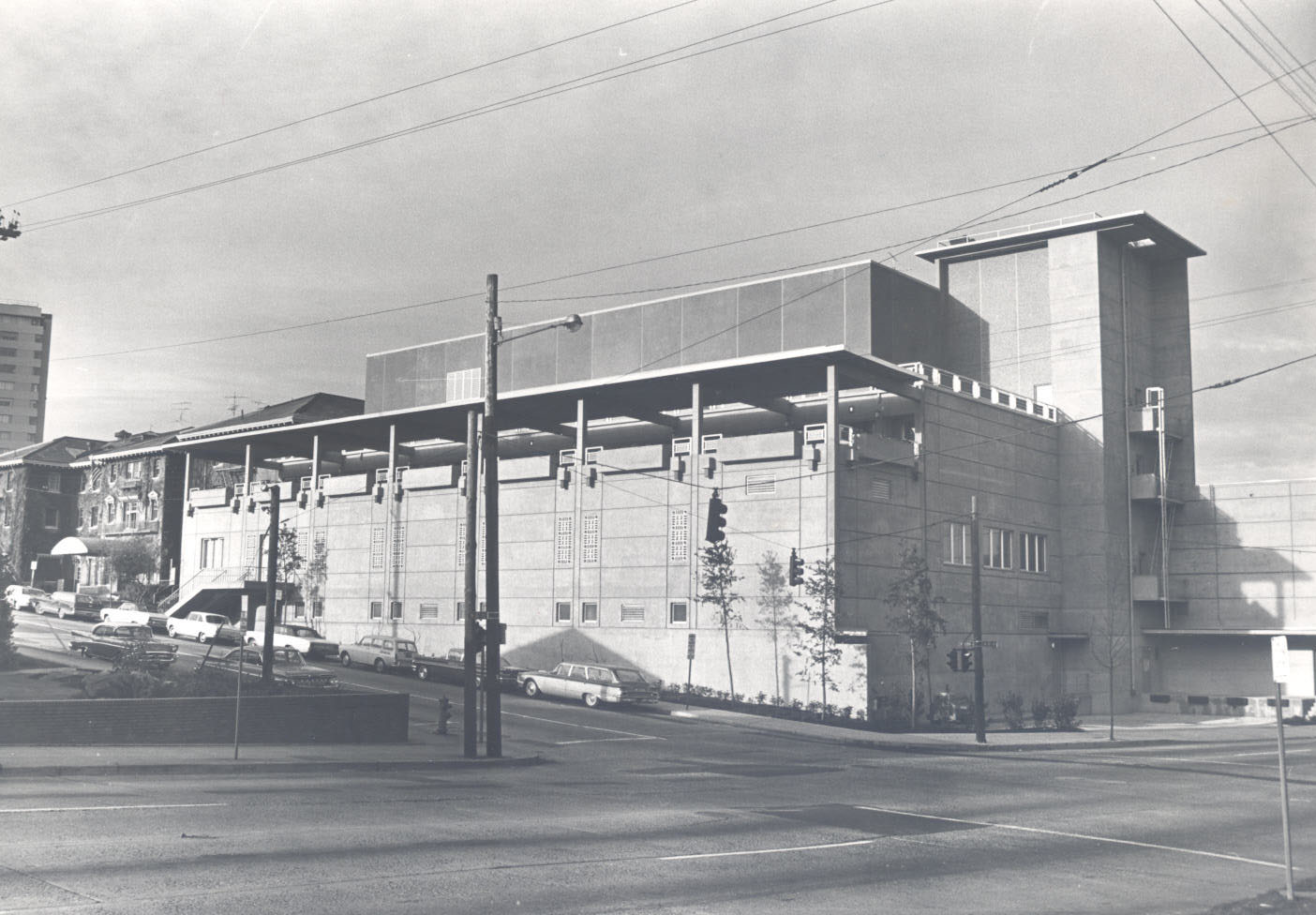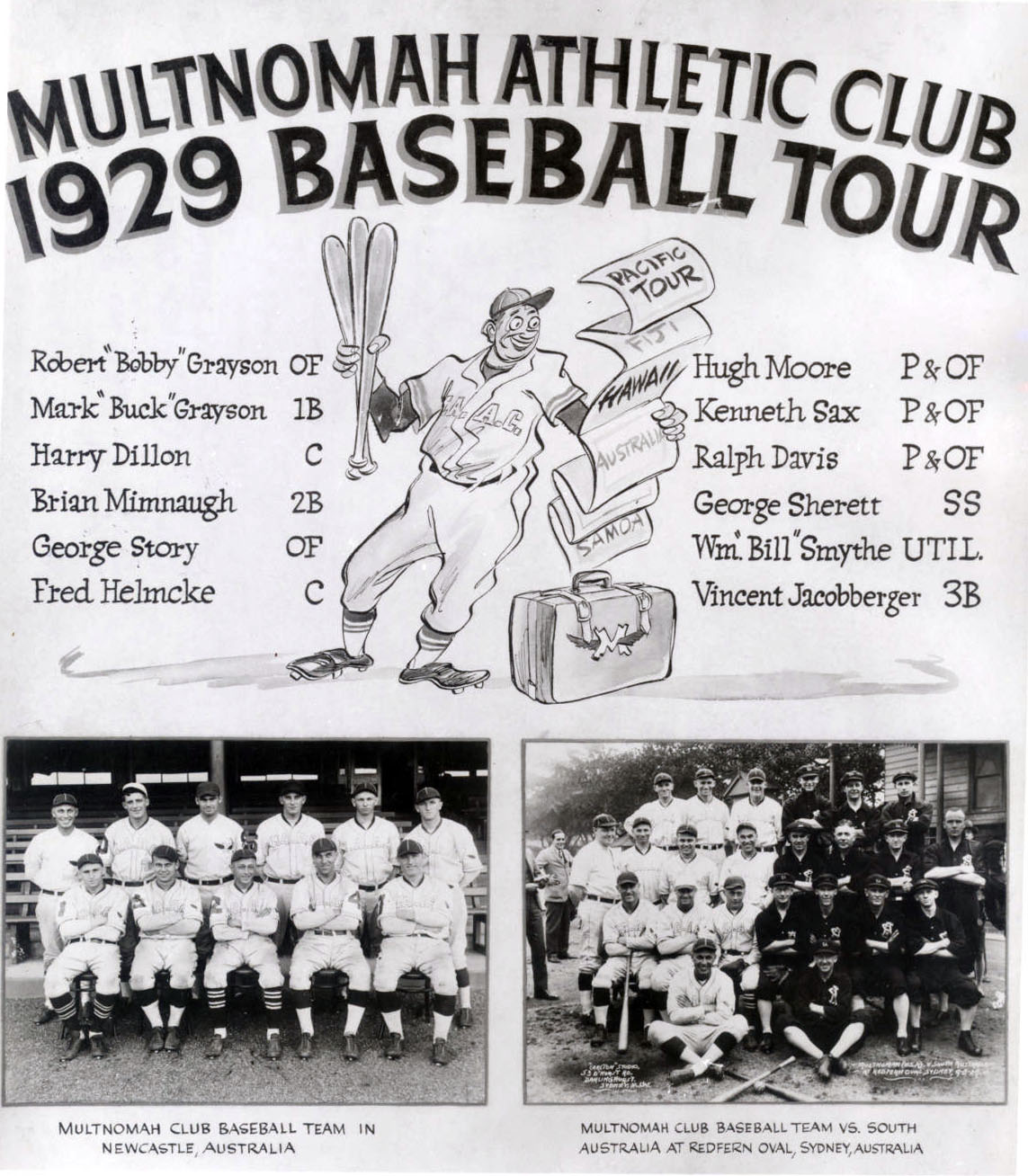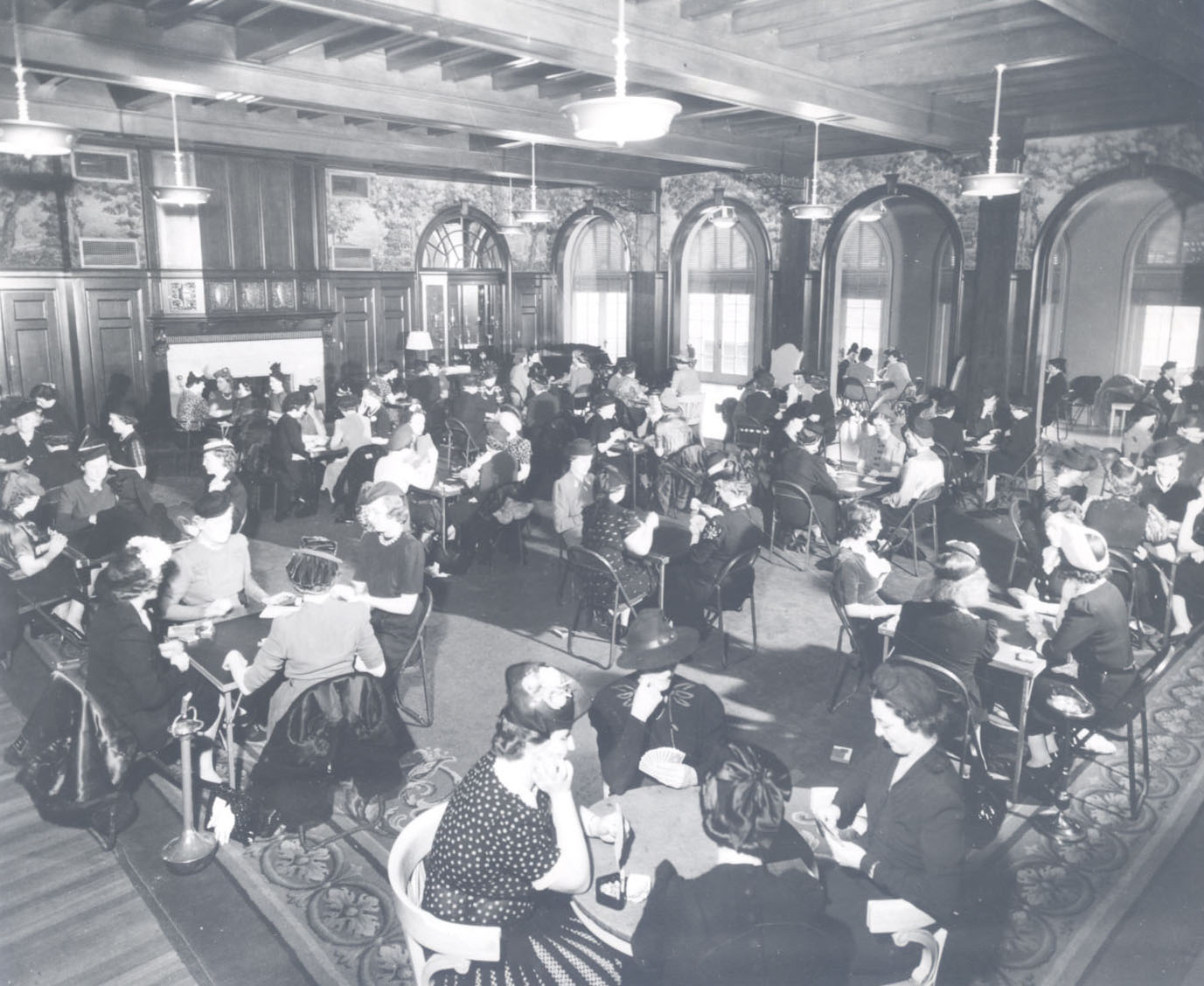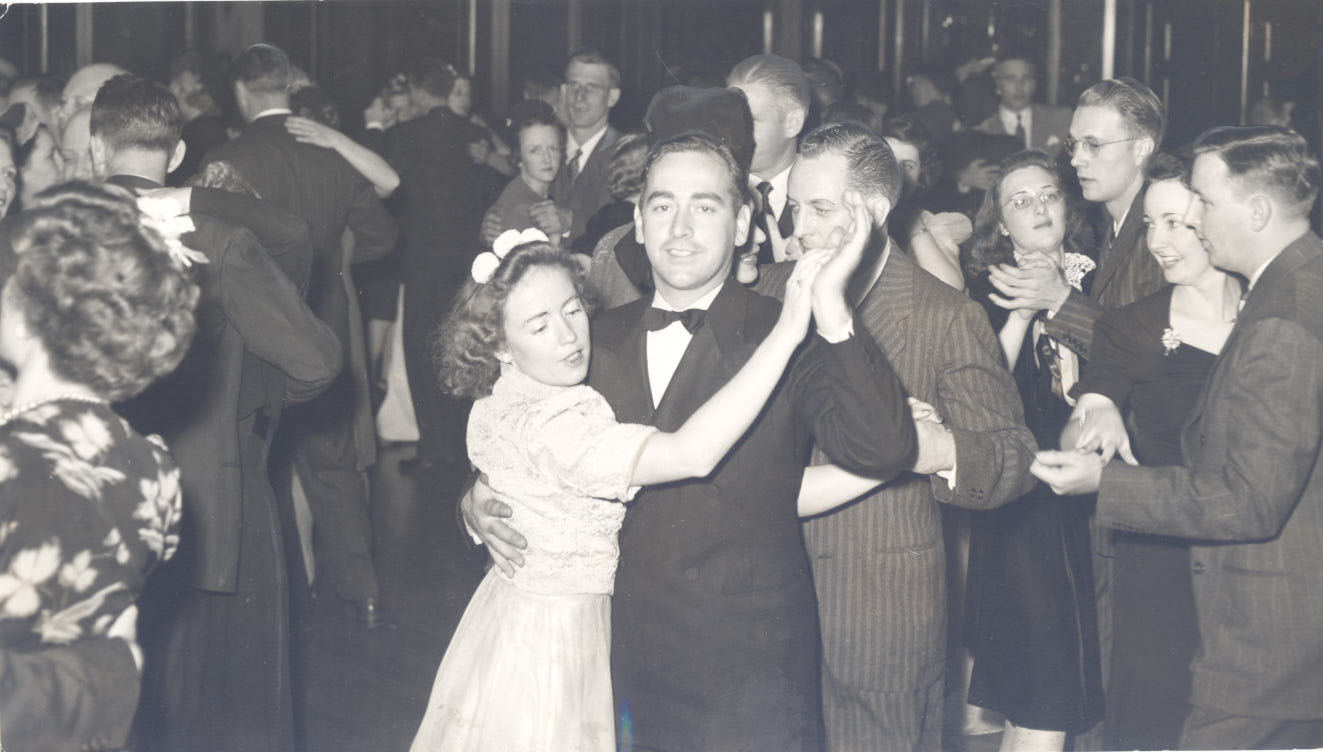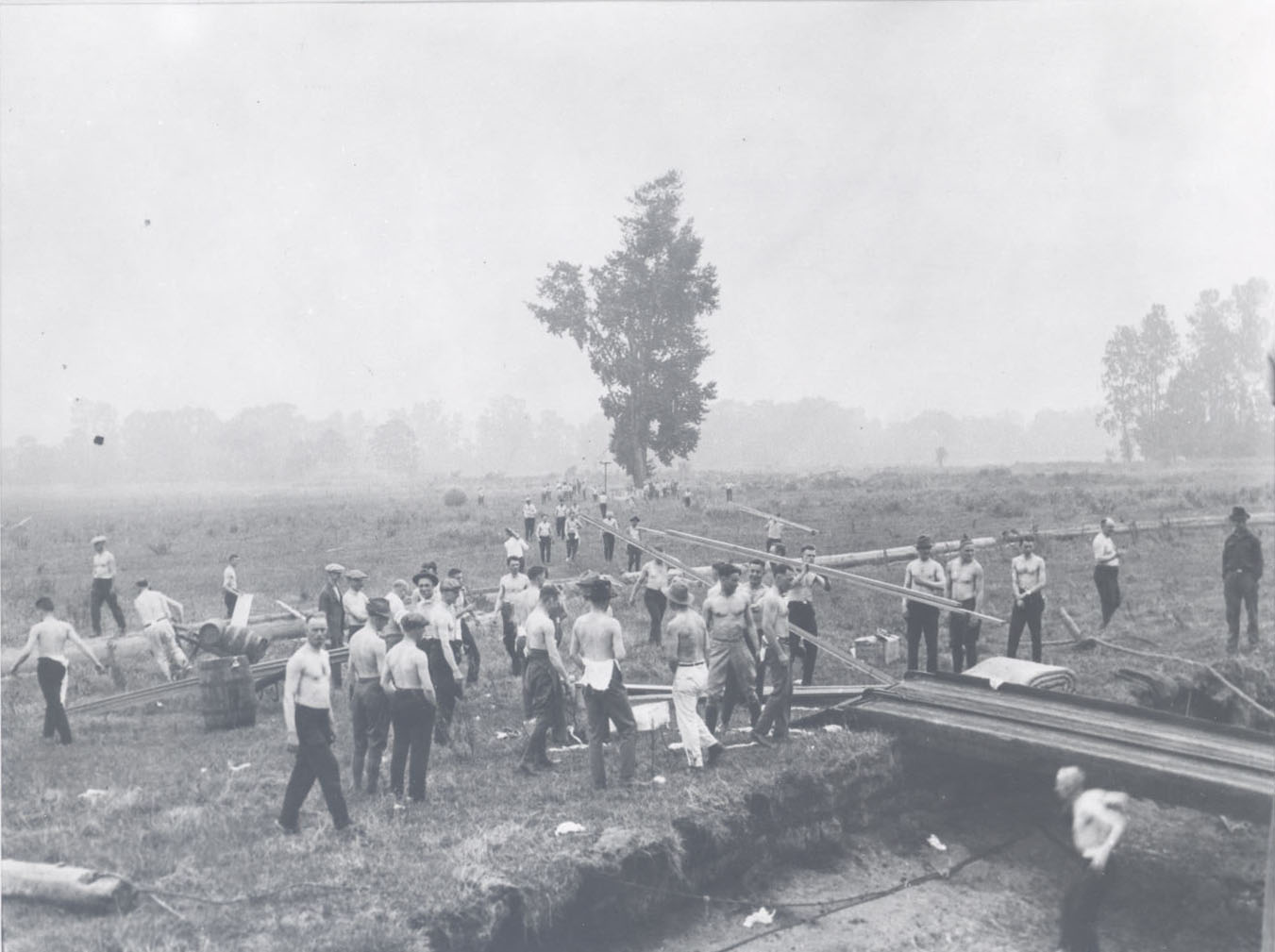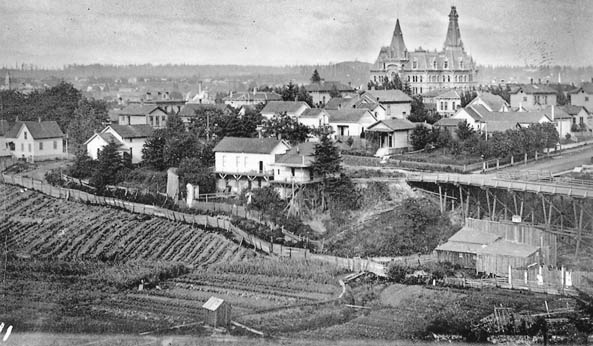Founded in 1891, the Multnomah Athletic Club (MAC) is considered Oregon’s preeminent sports club. The MAC has maintained a presence in Portland’s Goose Hollow neighborhood since 1900, when it built its first clubhouse on Southwest Chapman Street (now 18th Avenue). The current building on Southwest Salmon Street is the largest enclosed sports facility in the world, with 550,000 square feet of space.
The original twenty-six members of the Multnomah Amateur Athletic Club (MAAC), a splinter group of the Portland Football and Cricket Club, rented the third floor of the Willamette Block on Southwest Second Avenue. By 1892, the club had rented an athletic field in Goose Hollow, next to the 1887 Industrial Exposition Building, and constructed a small grandstand.
In 1893, the MAAC moved to Southwest Tenth Avenue and Yamhill Street, where William S. Ladd built a clubhouse that he rented to the club for $3,000 a year. With membership nearing 1,500 by the turn of the century, the MAAC built its first structure in Goose Hollow, just east of the field. The Chapman Street building opened in July 1900, complete with handball courts and a porch overlooking Multnomah Field.
The club suffered a blow in the summer of 1910 when a fire at the Exposition Building spread to the surrounding area and burned the grandstand, tennis courts, and the Chapman Street headquarters. The MAAC relocated to a site on Salmon Street, on the south side of Multnomah Field. President Theodore Roosevelt laid the cornerstone for the new clubhouse on April 5, 1911. Designed by member Morris Whitehouse, the building was completed in 1912.
By the mid-1920s, the club had outgrown the second grandstand at Multnomah Field, particularly when University of Oregon, Oregon Agricultural College (now Oregon State University), and the University of Washington played football games at the field. As early as 1908, 10,000 people had attended an Oregon-OAC game, and 30,000 people came to the stadium in 1923 to listen to President Warren G. Harding.
In 1926, the club financed the construction of Multnomah Stadium, a 35,000-capacity half-horseshoe on the site of Multnomah Field. In association with Portland architect A.E. Doyle, Morris Whitehouse designed the structure, the largest stadium in the Northwest.
When finances were tight in the early 1930s, the club found a new revenue source as pari-mutuel betting was legalized in Oregon. A dog track was installed at Multnomah Stadium in 1933, and the Multnomah Kennel Club was a tenant for the next twenty-three years. When the Kennel Club departed in 1956, the Portland Beavers baseball team became fulltime tenants. The club changed its name to the Multnomah Athletic Club in 1936.
By the 1960s, the MAC decided to focus on indoor facilities, and an eastern wing was constructed in 1965 with handball and squash courts and an indoor pool. Two years later, the 11,000-member club sold the Multnomah Stadium to the City of Portland. In 1973, the 1912 clubhouse was replaced by a new structure, with a looming central tower and arced roof designed by architectural firm Wolff, Zimmer, Frasca, Ritter. In 2013, the MAC had over 20,000 members.
The MAC has earned particular international recognition for its track-and-field program. In the early years, between 1900 and 1912, athletes such as Bert Kerrigan (high jump), Forrest Smithson (110-meter hurdles), A.C. Gilbert (pole vault), Dan Kelly (100-yard dash), and Martin Hawkins (110-meter hurdles) won medals at the Athens (Intercalated), London, and Stockholm Olympics. Other MAC athletes who competed and medaled in the Olympics include Thelma Payne and Louis Kuehn (springboard diving, 1920); Robin Reed and Chester Newton (featherweight wrestling, 1924); Suzanne Zimmerman (swimming, 1948); Kevin Freeman (equestrian, 1964, 1968, 1972); Rick Sanders (wrestling, 1968, 1972); Carolyn Wood (swimming, 1960); and Joni Huntley (high jump, 1984).
-
![Tennis courts]()
Tennis courts.
Tennis courts Courtesy Oreg. Hist. Soc. Research Library
-
![Pres. Harding's speech, 1923]()
Pres. Harding's speech, 1923.
Pres. Harding's speech, 1923 Courtesy Oreg. Hist. Soc. Research Lib., neg. no. 39084, courtesy MAC
-
![Interior]()
Interior.
Interior Courtesy Oreg. Hist. Soc. Research Lib., Oregonian
-
![MAAC athletes at Lewis & Clark Exposition, 1905]()
MAAC athletes at Lewis & Clark Exposition, 1905.
MAAC athletes at Lewis & Clark Exposition, 1905 Courtesy Oreg. Hist. Soc. Research Lib., neg. no. 39061
-
![Early MAC football team]()
Early MAC football team.
Early MAC football team Courtesy Oreg. Hist. Soc. Research Lib., neg. no. 35955
-
![Entrance, "Doorboard"]()
Entrance, "Doorboard".
Entrance, "Doorboard" Courtesy Oreg. Hist. Soc. Research Lib., neg. no. 39079
-
![Event flyer, 1919]()
Event flyer, 1919.
Event flyer, 1919 Courtesy Oreg. Hist. Soc. Research Lib., neg. no. 39071, courtesy MAC
-
![Tennis courts]()
Tennis courts.
Tennis courts Courtesy Oreg. Hist. Soc. Research Lib., neg. no. 39057, courtesy MAC
-
![Multnomah Athletic Club, 1912]()
Multnomah Athletic Club, 1912.
Multnomah Athletic Club, 1912 Courtesy Oreg. Hist. Soc. Research Lib., OrHi80995
-
![Pres. Roosevelt lays clubhouse cornerstone, April 11, 1911]()
Pres. Roosevelt lays clubhouse cornerstone, 1911.
Pres. Roosevelt lays clubhouse cornerstone, April 11, 1911 Courtesy Oreg. Hist. Soc. Research Lib., neg. no. 39053, courtesy MAC
-
![Multnomah Athletic Club]()
Multnomah Athletic Club.
Multnomah Athletic Club Courtesy Oreg. Hist. Soc. Research Lib., neg. no. 101458
-
![First club rooms, 2nd Ave., Portland, 1891-1893]()
First club rooms, 2nd Ave., Portland, 1891-1893.
First club rooms, 2nd Ave., Portland, 1891-1893 Courtesy Oreg. Hist. Soc. Research Lib., neg. no. 11988
-
![Multnomah Athletic Club, 1910]()
Multnomah Athletic Club, 1910.
Multnomah Athletic Club, 1910 Courtesy Oreg. Hist. Soc. Research Lib., neg. no.68575
-
![1912 building just prior to demolition, 1971]()
1912 building just prior to demolition, 1971.
1912 building just prior to demolition, 1971 Courtesy Oreg. Hist. Soc. Research Lib., neg. no. 23726
-
![Multnomah Athletic Club, 1965]()
Multnomah Athletic Club, 1965.
Multnomah Athletic Club, 1965 Courtesy Oreg. Hist. Soc. Research Lib., OrHi101461
-
![MAC baseball team your, 1929]()
MAC baseball team your, 1929.
MAC baseball team your, 1929 Courtesy Oreg. Hist. Soc. Research Lib., neg. no. 39081, courtesy MAC
-
![Bridge party]()
Bridge party.
Bridge party Courtesy Oreg. Hist. Soc. Research Lib., neg. no. 39087, courtesy MAC
-
![Dance after OSC (OU) football game, 1941]()
Dance after OSC (OU) football game, 1941.
Dance after OSC (OU) football game, 1941 Courtesy Oreg. Hist. Soc. Research Library
-
!["races, boxing, pushball and beer"]()
Sporting event, MAAC members.
"races, boxing, pushball and beer" Courtesy Oreg. Hist. Soc. Research Lib., neg. no. 39238, courtesy MAC
Related Entries
-
![Goose Hollow]()
Goose Hollow
One of the oldest neighborhoods in Portland, Goose Hollow has a history…
-
![Multnomah Stadium]()
Multnomah Stadium
Multnomah Stadium—also known as Civic Stadium, Portland General Electri…
Related Historical Records
Map This on the Oregon History WayFinder
The Oregon History Wayfinder is an interactive map that identifies significant places, people, and events in Oregon history.
Further Reading
Godfrey, Louise R. A History of the Multnomah Amateur Athletic Club. Portland: The Club, 1967.
McIvor, Kristyn, Joel A. Freeman, and Luana Hellmann Hill. Legacy of the Twenty-six: a Celebration of the First 100 Years of the Multnomah Athletic Club. Portland: Multnomah Athletic Club, 1991.
Multnomah Athletic Club Records [manuscript], 1895-1962. N.d. MS Mss 1611. Oregon Historical Society., n.p.

